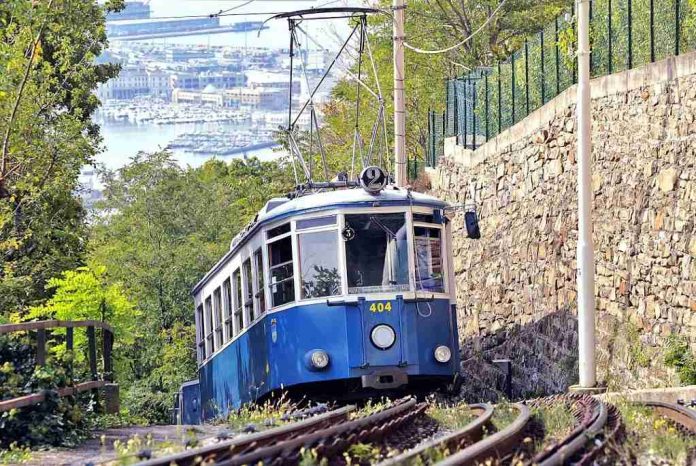by InTrieste
In a significant step toward restoring one of Italy’s most beloved historic tramways, officials from the city of Trieste and national transport authorities convened in Rome on Tuesday to finalize the timeline and interventions required to restart the Opicina tram line, with a target reopening set for the end of this year.
The meeting, held at the headquarters of ANSFISA (National Agency for the Safety of Railways and Road Infrastructure), brought together key figures including Trieste’s Mayor, Roberto Dipiazza, and ANSFISA’s Director, Domenico Capomolla. Also in attendance were municipal engineers and national transportation safety experts who have been closely monitoring the ongoing rehabilitation of the century-old tram.
The Opicina line, which runs from the heart of Trieste up to the plateau village of Opicina, is a storied fixture of the city’s public transportation system, celebrated both for its picturesque route and its engineering. Yet, after years of delays and technical setbacks, the line has been inactive since 2016, leaving residents and tourists alike eagerly awaiting its return.
At Tuesday’s meeting, officials reviewed the progress of current repair work and outlined the critical tasks still needed to get the tram back on track—literally. “We’ve defined and agreed upon the essential interventions needed to reopen this historic service by year’s end,” said Mayor Dipiazza, signaling optimism after years of delays.
Among the key works to be completed are the refurbishment of the tram’s rolling stock and repairs to the ten track switches that dot the line’s mountainous route. Officials indicated that once these initial repairs are completed, they would issue further guidelines for enhancing service levels, with additional upgrades being rolled out in phases over the coming months.
“Today’s meeting was about ensuring a shared commitment to quality and safety,” said Capomolla, ANSFISA’s director. “We are confident in our timeline, but more importantly, in our mutual understanding of what needs to be done.”
The project’s technical intricacies were also a major topic of discussion during the meeting. From improving the line’s structural components to refining safety protocols, the gathering offered a rare moment of alignment between local and national bodies, marking what many hope is the final hurdle before Trieste’s iconic tram resumes operation.
The closure of the tram has been a point of frustration for Trieste’s citizens, who take pride in its unique history. First opened in 1902, the tram once served as a lifeline for locals living in the hilly outskirts of the city. Today, its absence is felt both as a gap in transportation services and as a loss of a cultural landmark. Over the past several years, efforts to revive the line have been plagued by logistical challenges, leaving many doubtful of its imminent return.
However, Tuesday’s meeting suggests a renewed sense of urgency. “We’re getting close,” said Giulio Bernetti, Director of Trieste’s Public Works Department. “The people of Trieste deserve this tram back, and we’re committed to making it happen.”





























